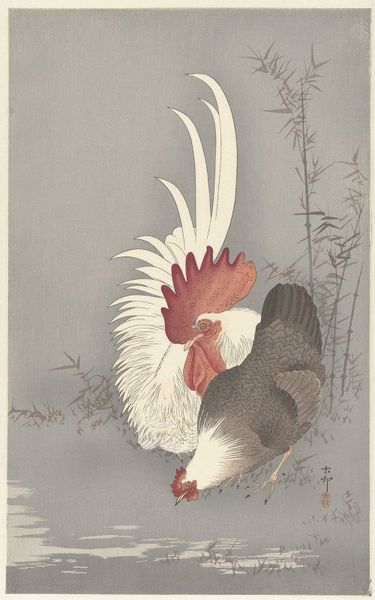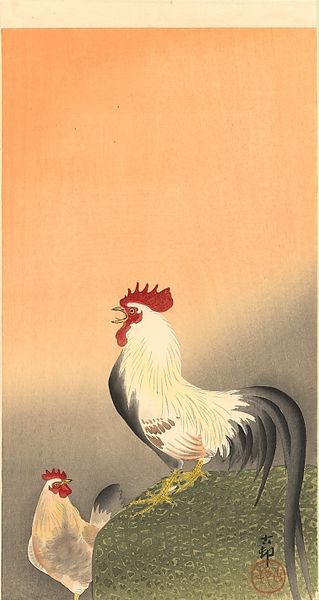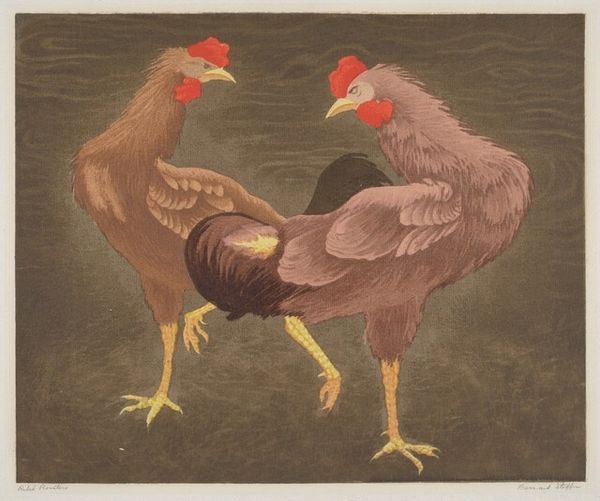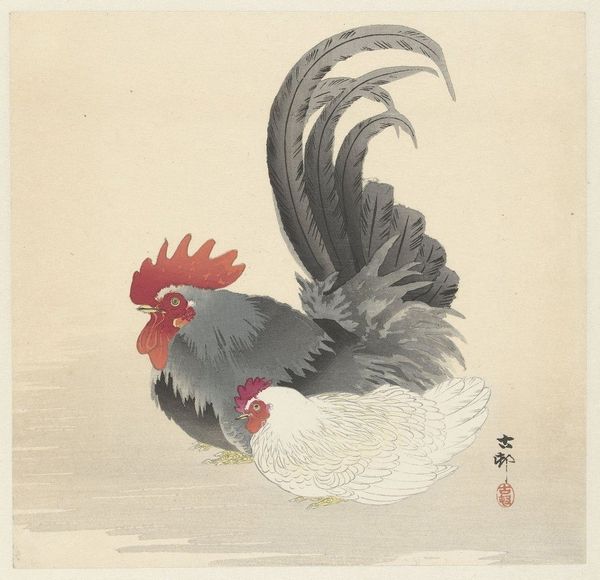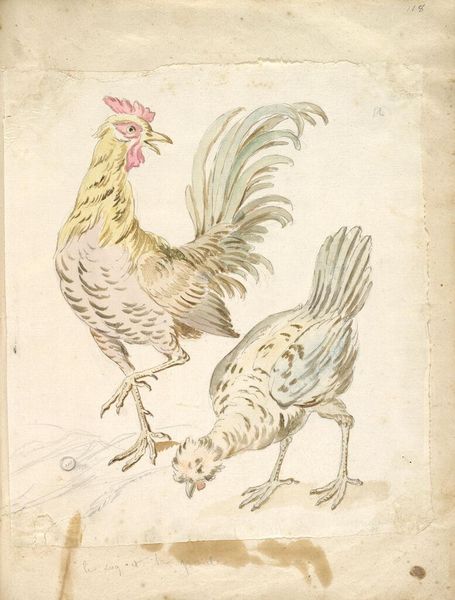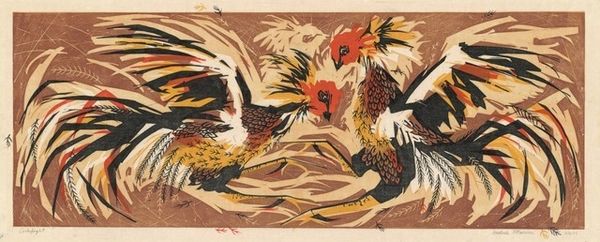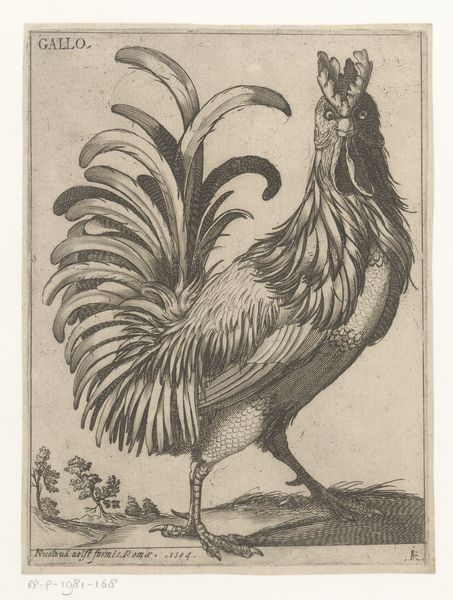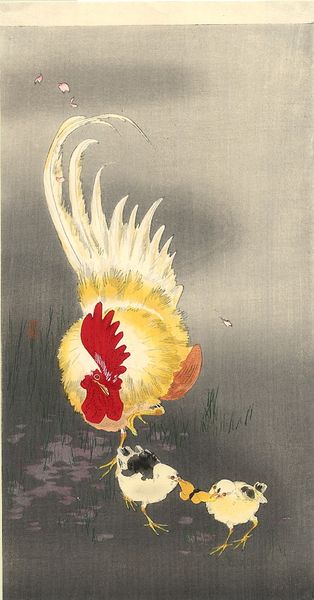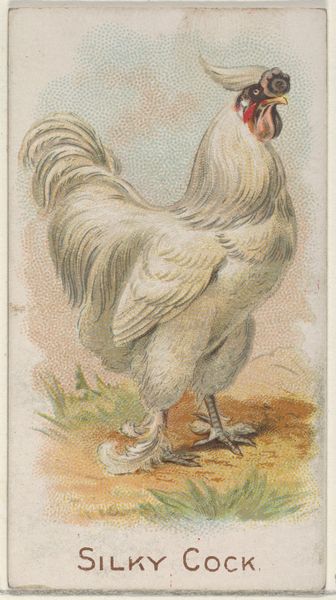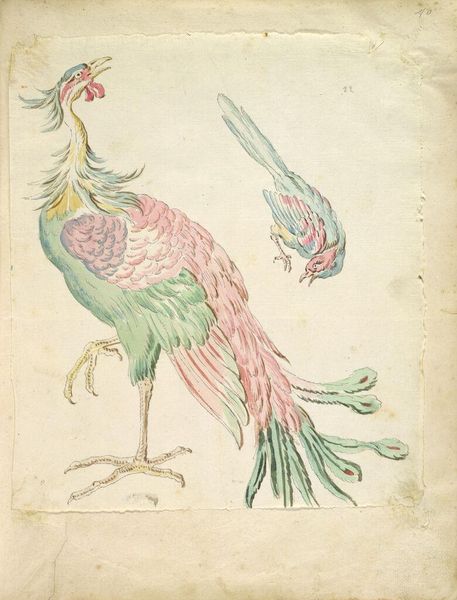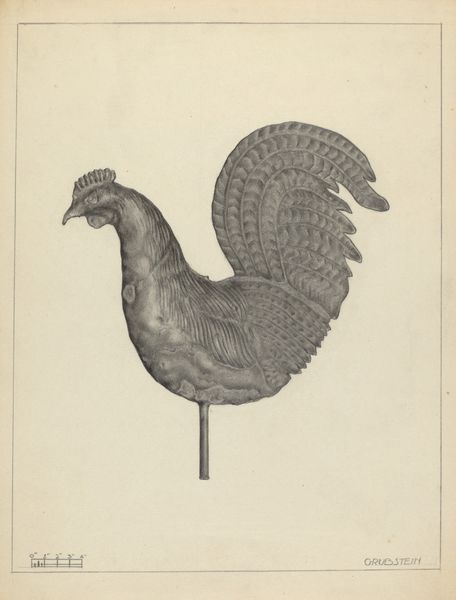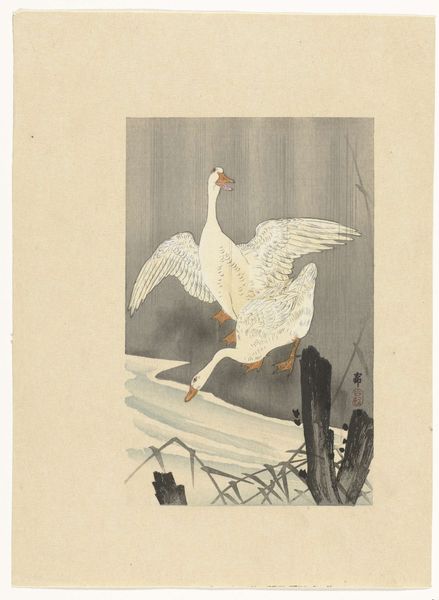
Copyright: Public Domain: Artvee
Editor: This lovely print, "Rooster and three chicks" by Ohara Koson, was made sometime between 1900 and 1910. I am intrigued by how the white ink is layered to create a feathery texture. What do you see when you look at this print? Curator: What strikes me is the labor involved in the woodblock printing process itself. The carving of the blocks, the layering of inks...each stage demands a deep engagement with the materials and an understanding of their inherent qualities. How do you think that physicality informs our reading of the subject matter, in this case, the rooster and chicks? Editor: I guess it's a slow process, and therefore deliberate, making it feel more real. Does the choice of subject have meaning in that period? Curator: Certainly. Consider the social context in which Koson was producing these prints. The rise of consumer culture, both domestically in Japan and internationally, created a demand for these portable, relatively affordable artworks. Were they catering to popular taste, or attempting to elevate it? Editor: That is a great point; they might be seen as both decorative objects and as skillful art objects? Is that contradictory? Curator: Not necessarily. Thinking about the production cycle allows us to move past simplistic hierarchies of "high" and "low" art. Ukiyo-e prints themselves were originally considered popular art, but later celebrated. Consider the implications in their value systems. Editor: This makes me rethink how I understand the value and position of Ukiyo-e prints in both historical and contemporary art worlds. Thank you. Curator: And thinking about the production challenges and material investment changes my experience of viewing too.
Comments
No comments
Be the first to comment and join the conversation on the ultimate creative platform.
